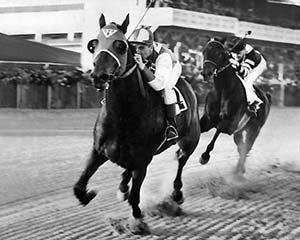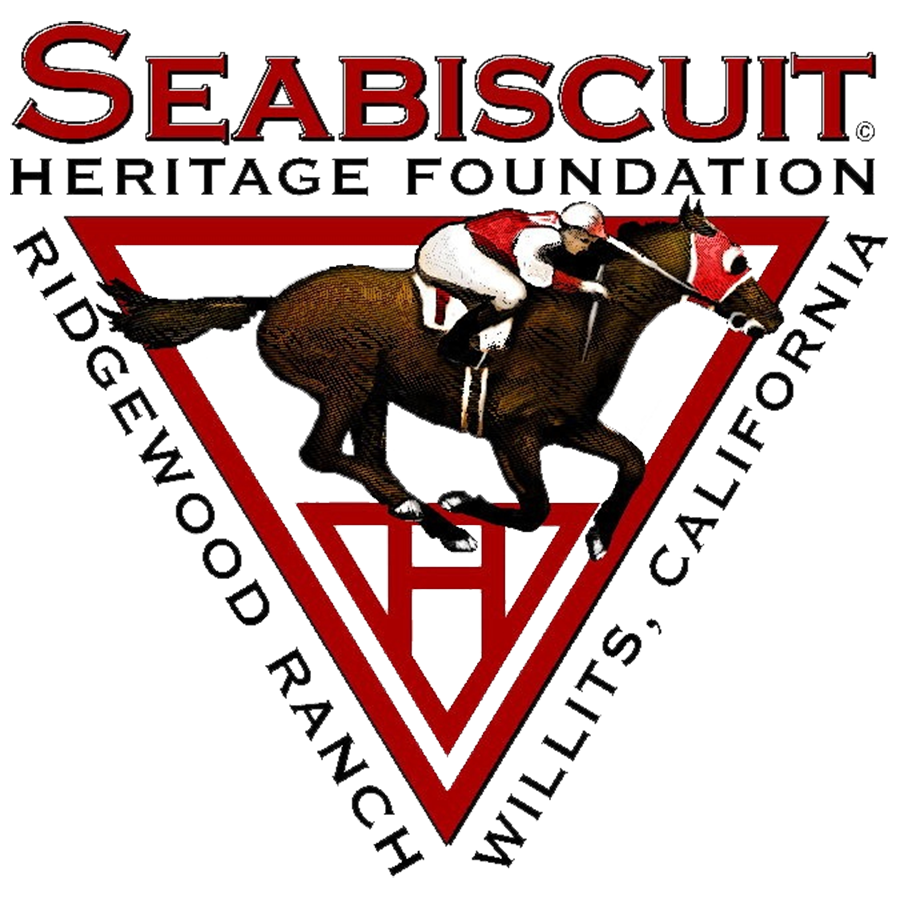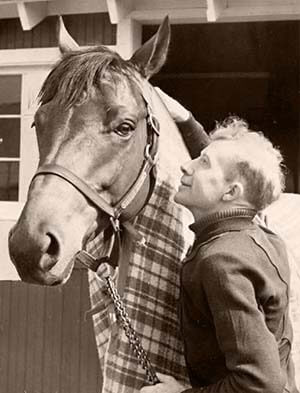Seabiscuit Says, Edition 1: Was Seabiscuit Bullied?
By Dr. June Donaldson
According to the brilliant and beautifully written book “Seabiscuit – An American Legend” by best-selling author Laura Hillenbrand, Seabiscuit’s first look at Tom Smith on June 29, 1936 at Boston’s Suffolk Downs was one of “attitude” and it wasn’t good!
Seabiscuit appeared arrogant, angry, and antagonistic. Perhaps a cover up for deep insecurity, hurt feelings, and discouragement at being consistently disrespected and undervalued?
It struck me Seabiscuit’s attitude came from years of being bullied where blustering, intimidating, habitually mean, insulting and threatening people set him up to lose. Right from Day 1, Seabiscuit was unfairly branded when his foaling groom pulled Seabiscuit into the world by saying “Runty little thing”. How’s that for getting off to a good start?
A definition of bullying is when someone rages, browbeats and is habitually cruel, insulting, and threatening to someone weaker, smaller, or in some way disadvantaged and vulnerable. That someone could be a person or an animal because haven’t we all seen a person bully another just like an animal can bully other animals in the backyard or pasture.
Bullying is such an unkind, unhelpful, and second-rate behaviour. It smacks of interpersonal insecurities, low emotional intelligence, and self-management incompetency. It speaks volumes about one’s lack of interpersonal skills, their anxieties, and their incompetence at dealing with their own issues.
Bullies take out their pain on others. They say and do things that can impact another person for years, if not one’s entire lifetime because let’s remember, not all of us are lucky enough to find a recovery station of comfort and consistent helpful actions by others as Seabiscuit did!
 Seabiscuit knew in his heart he could win but in his early life he wasn’t given the chance to win until he felt the acceptance and energy of Tom Smith, the compassion and respect of jockeys of Red Pollard and George Wolfe, and the love and endorsement of Charles and Marcela Howard.
Seabiscuit knew in his heart he could win but in his early life he wasn’t given the chance to win until he felt the acceptance and energy of Tom Smith, the compassion and respect of jockeys of Red Pollard and George Wolfe, and the love and endorsement of Charles and Marcela Howard.
There’s so much to say on this topic because yes, there is the bully. Then there is the target or victim, and in this case, that was Seabiscuit. Then there are the bystanders – all those people who saw and heard Seabiscuit being put down, insulted, mistreated, undermined, underestimated, and diminished and who did nothing to stop it.
In the forthcoming series of articles on bullying, we’ll explore the idea of Seabiscuit being bullied and how what happened to him might mirror what has happened, or is happening, to many of us and why it must be stopped.
We’ll start by focusing on the bully. Bully’s bully because they can. On the dark side, with their self-appointed, over-inflated ego, they assume a position of superiority and then behave in ways that hurt both them and their relationships with others.
They are self-absorbed, insecure, incompetent, destructive cowards because often, when they are called out on their behaviour, they don’t have the emotional intelligence to get out of their own way to address the situation nor do they have the courage to go face to face, eyeball to eyeball, with the person wanting to address and remedy the situation. Bully’s are dated, destructive, and boring.
On a more compassionate note, bullies are to be felt sorry for because they don’t have the skills mentioned above. They behave the only way they know how to behave, and the situation is made worse when those around them don’t speak up – don’t send them a message that what they are saying or doing is unacceptable.
Bullies don’t know that they don’t know how to change things just as Seabiscuit didn’t know how to improve his behaviour until he met others who showed him a new, more empathic way, classier way to behave. Bullies haven’t yet learned that it’s tough to be a black and white person in a grey world.
All of this ends up being a three-way street and a moving target. The bully, the target/victim, and the bystander(s) all of whom, often don’t know what they don’t know. Specifically, how inappropriate one’s bad behaviour is OR for the target/victim, how to defend oneself against the bad behaviour OR for the bystander(s) how to stand up and speak up to suffocate the bad behaviour.
My opinion is that Seabiscuit was bullied in his early life and there are many lessons to learn from him and his beloved care givers on how to recover from, and stop, bullying. We’ll explore those lessons in future Seabiscuit Says articles.
In closing, what lessons can be learned in the first of this Seabiscuit Says article on bullying?
If you bully, and this article resonates, sincerely ask yourself and get answers on:
1. How, when, and where did you learn to bully?
2. Who taught you that behaviour?
3. How do you feel about that person today?
4. Why do you bully now?
5. How do you personally and professionally benefit from bullying?
6. How does your bullying help you, over the long term, get and keep what you want?
7. How does your heart feel when you bully?
8. How does your body feel when you bully?
9. How do you want to be perceived – as a jerk (or worse) or as a decent person?
10. Will what you are doing and saying result in people missing you when you die, or will they immediately give thanks that the world is a better place with you gone?”
These questions are food for thought. If you bully, you’re not at the finish line yet. Seabiscuit, in his final race looked the other guy in the eye and generated that “sweet press of sudden acceleration*” to focus his approach, energy, and determination to achieve a major win. You could look in the mirror and do the same thing!
If you are a bully victim or bully bystander stay tuned for future Seabiscuit Says blogs as the next one will focus on the target/victim.
In the meantime, the internet is loaded with references and books on bullying so check them out.
We must ban bullying in our homes, workplaces, sports, and social groups. The only way we can ban it is to shine a light on it, learn more about it, set boundaries and expectations with others as to what is acceptable behaviour and what isn’t, and then develop the courage to confront and defend our position. Let’s get at it!
*Reference: Seabiscuit and Red Pollard’s final race at Santa Anita. The quote is from Laura Hillenbrand’s book referenced earlier.
(Dr. June Donaldson is a devoted Seabiscuit fan, a former Seabiscuit Heritage Board member, and an emotional intelligence (EQ) pioneer, best-selling author, publisher, business consultant and workshop/keynote facilitator. The Seabiscuit Says articles represent her personal opinion and they are for information purposes only. She is not responsible for how others react to or behave as a result of her opinions or work)

